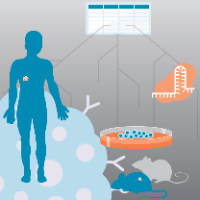Preclinical models for development of immune–oncology therapies
Immuno-Oncology Insights 2022; 3(8), 396–398
DOI: 10.18609/ioi.2022.41
Immunotherapy has demonstrated great success in clinical treatment, especially for cancer care. Here we review preclinical models, including cell lines, three dimensional (3D) cultures, and mouse models to support the need for tools enabling the development of novel immune–oncology (I–O) therapies. While in vitro studies have the advantage of being relatively simpler, faster, and higher throughput than in vivo models, they must be designed carefully to recapitulate the biological conditions that influence drug efficacy. The growing prevalence of 3D in vitro and ex vivo models has enabled screening and mechanistic studies in more complex, tissue-like environments containing multiple interacting cell types. On the other hand, syngeneic mouse models have been instrumental in the historical development of immunotherapies and remain an important tool in drug development, despite lacking fidelity to certain aspects of human physiology and pathology. Xenograft and humanized mouse models address some of these challenges, yet present limitations of their own. Successful development and translation of new I–O therapies will likely require thoughtful combination of several of these preclinical models, and we aim to help research and development scientists utilize the appropriate tools and technologies to facilitate rapid transition from preclinical evaluation to clinical trials.
